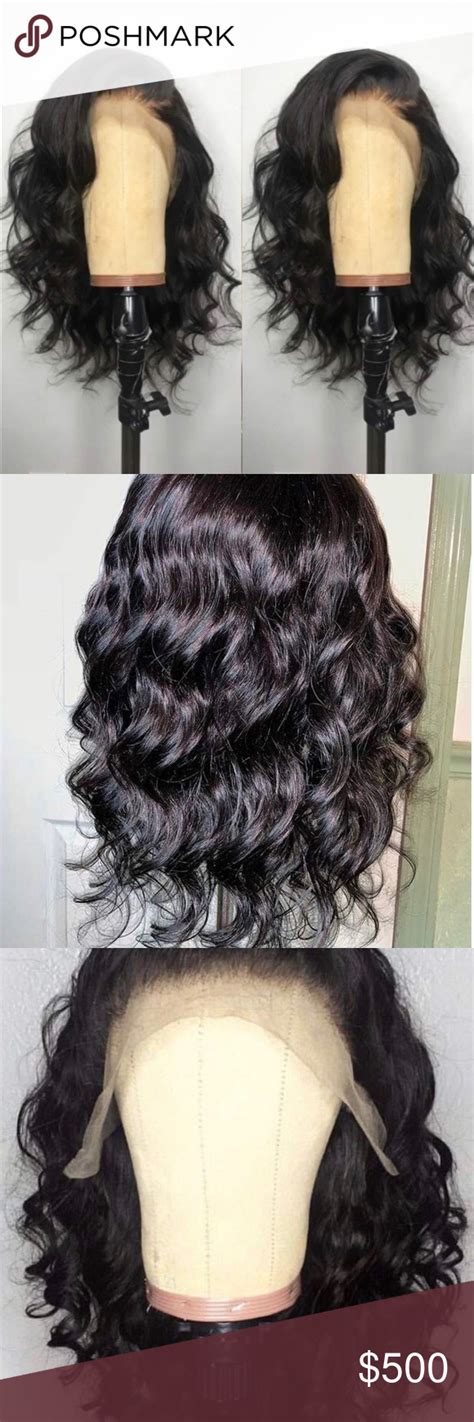As the pursuit of flawless tresses continues, adhesive lace wigs emerge as a revolutionary innovation that empowers individuals to embrace their desired hair goals with confidence and ease. These game-changing wigs seamlessly integrate with your natural hairline for an undetectable and captivating appearance, shattering the boundaries between what’s real and what’s not.

Advantages of Adhesive Lace Wigs
-
Natural-Looking: Adhesive lace wigs boast an intricate lace construction that mimics the look and feel of real hair, blending effortlessly with your own roots. The thin, transparent lace creates an invisible barrier, making it virtually impossible to discern where your natural hair ends and the wig begins.
-
Versatile: Adhesive lace wigs provide unparalleled versatility, allowing you to experiment with different hairstyles and colors without damaging your own hair. From sleek bobs to voluminous curls, the possibilities are endless. You can switch up your look as often as you like, empowering you to express your individuality to the fullest.
-
Secure: Unlike traditional wigs that can slip or shift, adhesive lace wigs adhere firmly to your scalp using medical-grade adhesive. This ensures a secure fit that will last all day, even during physical activities or inclement weather.
Types of Adhesive Lace Wigs
-
Full Lace Wig: The most versatile option, a full lace wig consists of a lace cap that covers the entire head, providing a seamless and natural look.
-
Lace Front Wig: A hybrid style, a lace front wig features a lace panel only at the front of the wig, creating a realistic and undetectable hairline.
-
360 Lace Wig: Similar to a full lace wig, a 360 lace wig has a lace cap that surrounds the entire head, but with the added benefit of leaving a small opening at the crown. This allows for styling versatility and the option to blend with your natural hair.
Applications of Adhesive Lace Wigs
Beyond their aesthetic appeal, adhesive lace wigs offer a multitude of functional applications:
-
Hair Loss: Individuals experiencing hair loss due to medical conditions or genetic factors can benefit from the confidence-boosting effects of adhesive lace wigs. They provide a natural and undetectable way to conceal hair thinning or bald spots.
-
Protective Styling: Adhesive lace wigs can serve as a protective measure for natural hair. By covering and protecting natural strands from environmental damage and styling tools, wigs help maintain hair health and promote growth.
-
Fashion: Fashion-forward individuals use adhesive lace wigs to experiment with bold hair colors, unique textures, and dramatic styles without committing to permanent changes.
Choosing the Right Adhesive
Selecting the appropriate adhesive is crucial for ensuring a secure and comfortable fit. Consider the following factors:
-
Skin Type: Choose an adhesive that is compatible with your skin type. For sensitive skin, opt for hypoallergenic and latex-free options.
-
Hold Time: Adhesive strength varies based on the brand and formula. Choose an adhesive that provides the desired hold time, whether it be several days or a few weeks.
-
Removal Process: Ensure the adhesive you select has an easy removal process that minimizes skin irritation or damage.
Steps for Applying an Adhesive Lace Wig
-
Prepare Your Hair: Braid or cornrow your natural hair for a smooth and secure base.
-
Cleanse Your Scalp: Thoroughly cleanse your scalp with a gentle shampoo and alcohol-free astringent to remove any oils or residue.
-
Apply Adhesive: Use a thin layer of adhesive along the perimeter of your hairline. Wait for the adhesive to become tacky to the touch.
-
Position the Wig: Carefully align the wig with your natural hairline and press it into place. Smooth out any wrinkles or bumps.
Common Mistakes to Avoid
-
Using Too Much Adhesive: Overusing adhesive can lead to skin irritation and difficulty removing the wig.
-
Applying Adhesive to Hair: Adhesive should only be applied to your scalp, not your natural hair.
-
Not Waiting for Adhesive to Become Tacky: Applying the wig before the adhesive becomes tacky will result in a weak hold.
Effective Strategies for Prolonged Wear
-
Use a Wig Cap: A wig cap protects your natural hair and creates a barrier between the adhesive and your skin.
-
Trim the Lace: Trimming the excess lace around the perimeter of the wig will minimize irritation and ensure a more natural look.
-
Cleanse Regularly: Wash your wig and scalp regularly to prevent product buildup and odor.
Tables
Table 1: Types of Adhesive Lace Wigs
| Type | Description |
|---|---|
| Full Lace Wig | Lace cap covers the entire head |
| Lace Front Wig | Lace panel only at the front of the wig |
| 360 Lace Wig | Lace cap surrounds the head with an opening at the crown |
Table 2: Adhesive Lace Wig Applications
| Application | Benefits |
|---|---|
| Hair Loss | Conceals hair thinning or bald spots |
| Protective Styling | Protects natural hair from damage |
| Fashion | Allows for experimentation with hair styles and colors |
Table 3: Factors to Consider When Choosing Adhesive
| Factor | Considerations |
|---|---|
| Skin Type | Choose hypoallergenic and latex-free options for sensitive skin |
| Hold Time | Select adhesive based on desired wear time |
| Removal Process | Opt for adhesives with an easy removal process |
Table 4: Common Mistakes to Avoid When Wearing an Adhesive Lace Wig
| Mistake | Consequences |
|---|---|
| Using Too Much Adhesive | Skin irritation, difficulty removing wig |
| Applying Adhesive to Hair | Weak hold |
| Not Waiting for Adhesive to Become Tacky | Insufficient hold |
